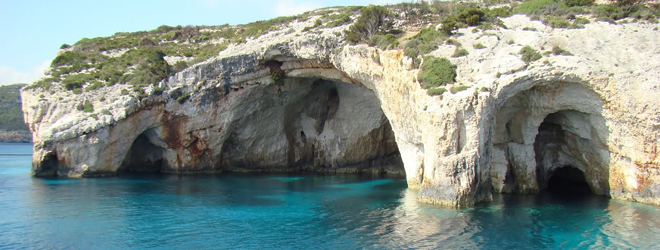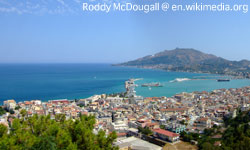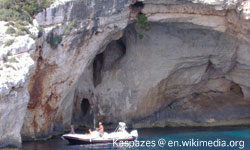
Zante
Zante
The Ionian islands are a group of islands to the west of mainland Greece, each with its own distinct character, and each bearing testimony to the various colonisations and historical influences of its numerous rulers.
The island of Zante is the southernmost island in the Ionian group and is also known by the Greek name of Zákynthos. Homer mentions Zante in the Iliad and the Odyssey and writes that the island was first settled by Zakynthos, son of the king of Troy, around 1500-1600 BC. The capital of Zante is Zákynthos Town and the island has a population of approximately 46 000.
The geography of Zante includes both steep cliffs and a mountainous plateau as well as a densely populated fertile plain, enclosing shallow bays and sandy beaches. The mild climate and good rainfall make it ideal for growing citrus fruit, grapes, and the Zante currant, in addition to olives.
Rebuilt after a devastating earthquake
Zante suffered massive destruction by a series of four earthquakes in the summer of 1953 and its elegant Zákynthos Town, built by the Venetians, was almost completely destroyed. It has since been rebuilt with attempts to recapture its former grace. The church of Agios Dionýsios, the island’s patron saint, survived the earthquake and houses the body of the saint in a silver coffin.
The city’s Byzantine Museum also houses a vast collection of icon and frescoes rescued from the town’s destroyed churches and monasteries, and a scale model of the pre-earthquake town. The Solomós Museum contains the tomb of the poet Dionýsios Solomós, the principal modern Greek poet and author of the Greek national anthem.
The turtles of Zante
 The island is famous for its green loggerhead turtles, which have been migrating to Laganás Bay to nest for thousands of years.
The island is famous for its green loggerhead turtles, which have been migrating to Laganás Bay to nest for thousands of years.
However, the development of Laganás Bay with its many bars and discos has decimated the numbers of these animals, which can weigh up to 180 kg, to a mere 800 and their preservation has become an important issue for environmentalists. Stretches of the beach are now off-limits, and efforts are made to ensure the future survival of the loggerhead turtles. Excursions in glass-bottomed boats allow visitors to observe the turtles.
The Blue Caves
 At the northernmost tip of Zante are the unusual Blue Caves, named for the stunningly clear blue water below the hollowed-out white rock formations, cut into the cliffs of Cape Skinari, the largest of which is known as the Blue Grotto.
At the northernmost tip of Zante are the unusual Blue Caves, named for the stunningly clear blue water below the hollowed-out white rock formations, cut into the cliffs of Cape Skinari, the largest of which is known as the Blue Grotto.
The caves can only be accessed by boat but boat trips are available from the nearby resort of Agios Nikólaos as well as boat trips that go right around the island.
Accommodation
Accommodation on Zante is fairly basic, but a number of options are available: Leedas Village offers self-catering apartments, as does Paliokaliva Village with its stone cottages. There is the small Villa Tzogia on the west side of the island, and the even more rustic Tsivouli Park where the owners keep livestock and grow fruit and vegetables. The lively Zakanthi restaurant and bar in Kalamáki offers excellent Greek cuisine.